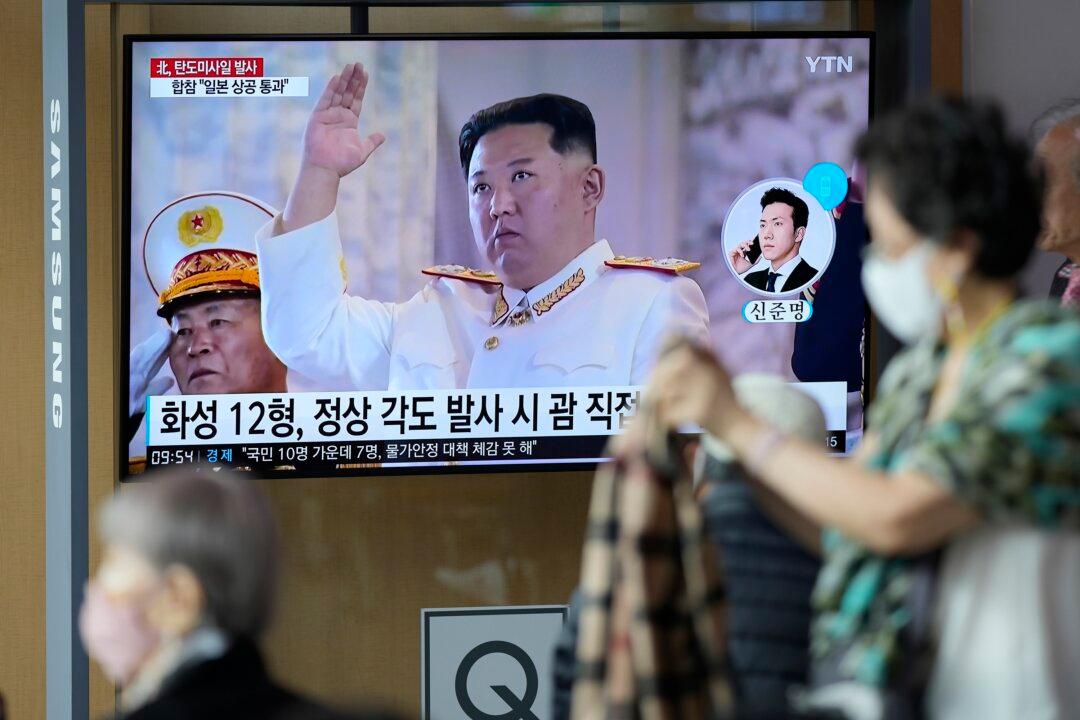North Korea fired two ballistic missiles into the Sea of Japan on Oct. 6, one day after the United States redeployed an aircraft carrier to the region in response to a previous missile launch over Japan by the isolated communist regime on Oct. 4.
South Korea’s Joint Chiefs of Staff (JCS) and the office of Japanese Prime Minister Fumio Kishida confirmed the missile launch. North Korea launched two missiles 22 minutes apart, the South Korean JCS said in a statement. Kishida called the action “absolutely intolerable.”





